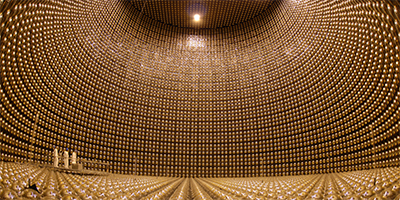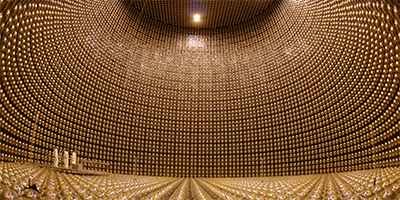Neutrino Test of Lorentz Invariance
Physicists often look for the exception that might make a new rule. A prime example is Lorentz invariance, a fundamental principle in relativity, whose exceptions—if there are any—would imply the need for an alternative theory of gravity. A new comprehensive study of atmospheric neutrinos finds no violation of Lorentz invariance. The results place some of the toughest constraints to date on Lorentz-violating theories.
Lorentz invariance assumes that measurements shouldn’t depend on the speed or the orientation of the laboratory frame. As straightforward as that sounds, certain gravity models, such as string theory, predict this rule is broken to a small degree. Lorentz violation (LV) could show up in different ways, such as a directional dependence in the speed of light, but no evidence has so far been collected.
Neutrinos could be a sensitive probe of LV through their oscillation behavior. They are known to oscillate between three flavors (electron, muon, and tau), but Lorentz violations could cause additional oscillations that would modify how the signal depends on neutrino energy and path length (i.e., the distance a neutrino travels between creation and detection). Past searches have failed to find LV oscillations in reactor neutrinos. The Super-Kamiokande experiment—an underground neutrino observatory in Japan—has now reported a characterization of atmospheric neutrinos accessing much greater ranges in neutrino energy and path length than previous tests, giving it greater sensitivity to LV oscillations. The data showed no LV signature, allowing the researchers to place the first-ever limits on LV oscillations between muon and tau neutrinos. For other flavor oscillations, they improve on previous limits by factors of a thousand or more.
This research is published in Physical Review D.
–Michael Schirber





